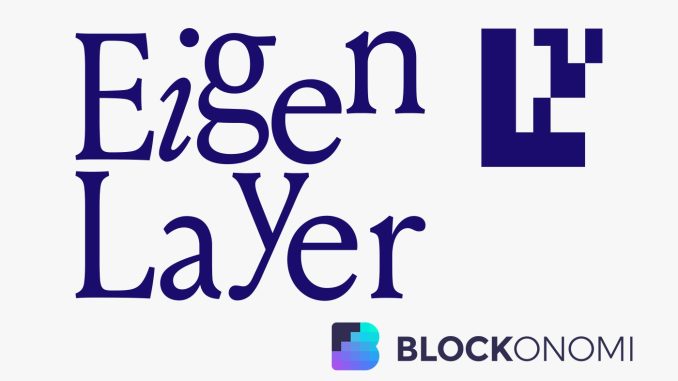
EigenLayer, a highly anticipated Ethereum restaking protocol, has made its initial debut on the blockchain’s mainnet. The launch marks a significant milestone for the project, which has already amassed over $13 billion in assets despite not being fully operational.
TLDR
EigenLayer, an Ethereum restaking protocol with over $13 billion in assets, has partially launched on the Ethereum mainnet.
Some key features, such as in-protocol payments from actively validated services (AVS) to operators and slashing, will be introduced later in 2024 after the EigenLayer marketplace stabilizes.
EigenDA, a data availability service and the first AVS to launch on EigenLayer, aims to help other blockchain apps store transaction data.
Other AVS can register with EigenLayer but cannot fully deploy yet, and restaking rewards are not live at the moment.
EigenLayer’s rise has attracted significant investments from venture capital firms like Andreessen Horowitz (a16z) and has led to the emergence of liquid restaking protocols like Ether.fi and Puffer.
However, the partial launch has left some in the crypto community questioning the extent of EigenLayer’s current capabilities and the timeline for the introduction of key features.
The primary goal of EigenLayer is to enable users to earn additional rewards by restaking their already-staked Ether (ETH) tokens. This innovative approach has the potential to revolutionize the staking landscape by allowing users to maximize their returns while simultaneously contributing to the security of the Ethereum network and other blockchain applications.
One of the most notable aspects of the EigenLayer launch is the introduction of EigenDA, a data availability service that serves as the first actively validated service (AVS) on the protocol. EigenDA aims to provide a solution for other blockchain applications to store their transaction data securely and efficiently. This service could prove invaluable for developers seeking to build on top of the Ethereum network, as it offers a reliable and decentralized storage option.
Despite the excitement surrounding the mainnet launch, EigenLayer has clarified that several crucial features are still in development and will not be available until later in 2024. These features include in-protocol payments from AVS to operators and a mechanism called slashing, which penalizes validators for failing to perform their duties correctly. The decision to delay the implementation of these features is intended to allow the EigenLayer marketplace sufficient time to develop and stabilize before introducing additional complexity.
The absence of these key features has led some industry experts to question the extent of EigenLayer’s current functionality. Christine Kim, vice president of research at Galaxy Digital, highlighted the lack of restaking rewards in a recent post on social media platform X, formerly known as Twitter. Kim’s comment underscores the importance of these features in realizing the full potential of the EigenLayer protocol.
So there’s still no restaking rewards ? https://t.co/zryQxpv5JF
— Christine Kim (@christine_dkim) April 10, 2024
While other AVS can register with EigenLayer, they cannot fully deploy on the protocol at this time. This limitation may temporarily restrict the growth and adoption of the platform, as developers and users eagerly await the introduction of a more comprehensive set of features and capabilities.
Despite these challenges, EigenLayer’s rise has not gone unnoticed by the venture capital community. The protocol has attracted significant investments from prominent firms such as Andreessen Horowitz (a16z), which has contributed to the $150 million raised by Eigen Labs, the development firm behind EigenLayer. This influx of capital demonstrates the high level of confidence in the project’s potential and its ability to reshape the staking and security landscape in the crypto industry.
The emergence of EigenLayer has also given rise to a new category of protocols known as liquid restaking. Projects like Ether.fi and Puffer have capitalized on the growing interest in EigenLayer by offering users the ability to deposit their funds and receive liquid tokens in return.
These protocols have introduced their own points systems to incentivize user participation, further fueling the billions of dollars worth of deposits into EigenLayer.




Be the first to comment